I hoped that I found a more interesting title for this blog as it develops as a Leyland 11inch dual clutch parts does not sound like a title that would encourage anybody to dedicate some of their time to read this blog. But let's see what develops and if I come up with a more inventive title as I write more.
I wanted to write a blog to share the history of the 11” and 12” dual clutch units that are fitted to the Nuffield tractors as well as the Leyland middleweight range and the Marshall Golden Harvest range of tractors too.
These clutches were originally manufactured for British Leyland by Borg & Beck, they were first fitted into the Nuffield range of tractors when the Nuffield Universal range of tractors came out – that being both the Nuffield Universal 3 and the Nuffield Universal 4.
These 11” dual clutch units replaced the single-clutch units fitted to the earlier Nuffield tractor and allowed much more flexibility for the range of tractors. Single clutch tractors could be used for running thrashing machines or a saw-bench. The dual-clutch era developed as the demand for PTO drive equipment increased e.g. hay-making equipment such as mower, tedder, balers etc. These dual-clutch systems were a much-improved fitment and made the tractors much more flexible. This also meant an improvement in Health & Safety as the rotating PTO shaft was no longer going all the time.
For example, these tractors could then be used for running thrashing machines, or a saw-bench due to the dual-clutch unit that they had fitted. It also meant an improvement in Health & Safety as the rotating PTO shaft was no longer going all the time.
This 11” dual clutch unit is a robust clutch unit and proved to work very well as it continued to be used from this time in the late 1950’s right through to the Leyland production years and into the Marshall Golden Harvest production years.
The 11” was improved on in the Golden Harvest range of Marshall tractors in that it was replaced with a 12” main drive plate. This 12” clutch unit was effectively the same main clutch casting unit, but with ½“ of material machined away from each side, allowing it to accommodate a 12” main clutch plate. This actually resulted in a slightly weaker clutch unit as there is less material in the castings. Therefore, unless there is a reason to keep the 12” clutch plate, we always encourage Marshall owners who are replacing their clutch unit to put an 11” clutch unit back in as it is a more reliable unit.
Parts started to dry up, so we knew we had to do something.
LuK were the OEM manufacturer of these clutches, and they supported the Leyland tractor clutches until fairly recently. In 2018 we suddenly found that purchasing the genuine OEM replacement parts for these clutch units was more difficult and we didn’t really understand what was going on. Once we enquired, we understood that LuK were stopping supporting these clutch units, which also have many cross-over components with the David Brown tractors. This was a real blow to us as tractor parts suppliers – what use is a tractor is you cannot get parts for the clutch?
So, we had to work out a plan, and this involved talking to Schaeffler (UK) who supplied the LuK parts and we negotiated a list of all the parts that they had left in stock, and we had to come up with a deal for purchasing the parts so that we could continue to supply clutch components for the Nuffield, Leyland and Marshall tractors.
This negotiation was quite a lengthy process as they had to go and count their stock first which took a long, long time, and then we had to process the list at the other end and visualise the sheer quantity of parts that were presented to us on a piece of paper. In hindsight maybe we should have gone to see it all in person, as we underestimated the sheer quantity of parts that we were buying.
So, a deal was done, and they then had to pallet the parts up and once we realised how many pallets there were going to be (it was not just a quick trip in the van to pick up some clutch parts), we organised a curtain-sided lorry to load up and bring the pallets to our stores in Alstonefield. Thankfully we had a space in mind, and it soon got filled with Leyland clutch components. All the components were catalogued and racked so that we knew what we had and where it was located. So, Tractor Spare Parts Ltd became the home of LuK clutch spares for the Nuffield, Leyland, Marshall and David Brown marques.
What is the difference between a Leyland clutch and a David Brown clutch?
I have already eluded to the fact that the Leyland clutches and the David Brown clutches are very similar, and both sets of components came in the deal that we negotiated. Well, basically they are the opposite of each other.
What is the main clutch plate in the Leyland is the PTO plate in a David Brown. What is the main clutch plate in the David Brown is the captive PTO plate in the Leyland tractors. So, they are the same but different. As a result of this difference there are certain things that are different such as the clutch spring rating. The Leyland clutches have white springs with a blue stripe down them for the main plate, part number 27H4675. The Leyland clutches then have yellow or cream springs for the PTO clutch, part number 7H3082.
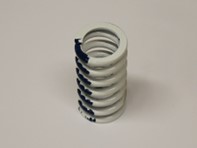
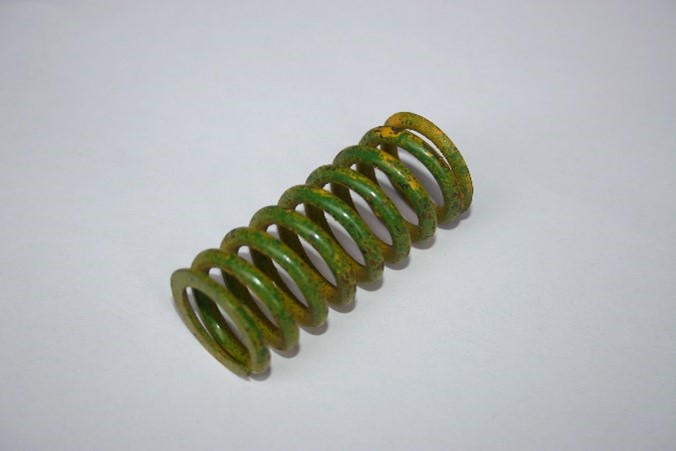
The David Brown tractors on the other hand have purple or lilac springs with a black strip for the main clutch plate (although some replacement springs are green) part number K625262, and red springs for the PTO clutch, part number K625209. The colour of the springs tells us the tension of the spring, and this is very important for the set-up of the clutch – get the wrong spring tension and your clutch pedal will either travel too easily or be too hard to press.
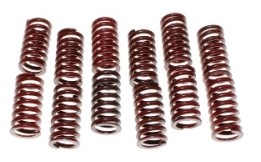
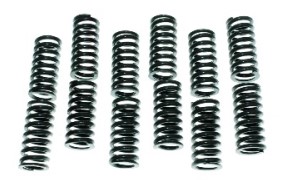
So it is important to understand the difference between the Leyland and David Brown clutches as you need to know what parts are interchangeable, such as the main release lever on the Leyland, 37H2455, is the PTO release lever on the David Brown, K923846. We have tried to make it clear on the website where we list the parts, but it can still be confusing.
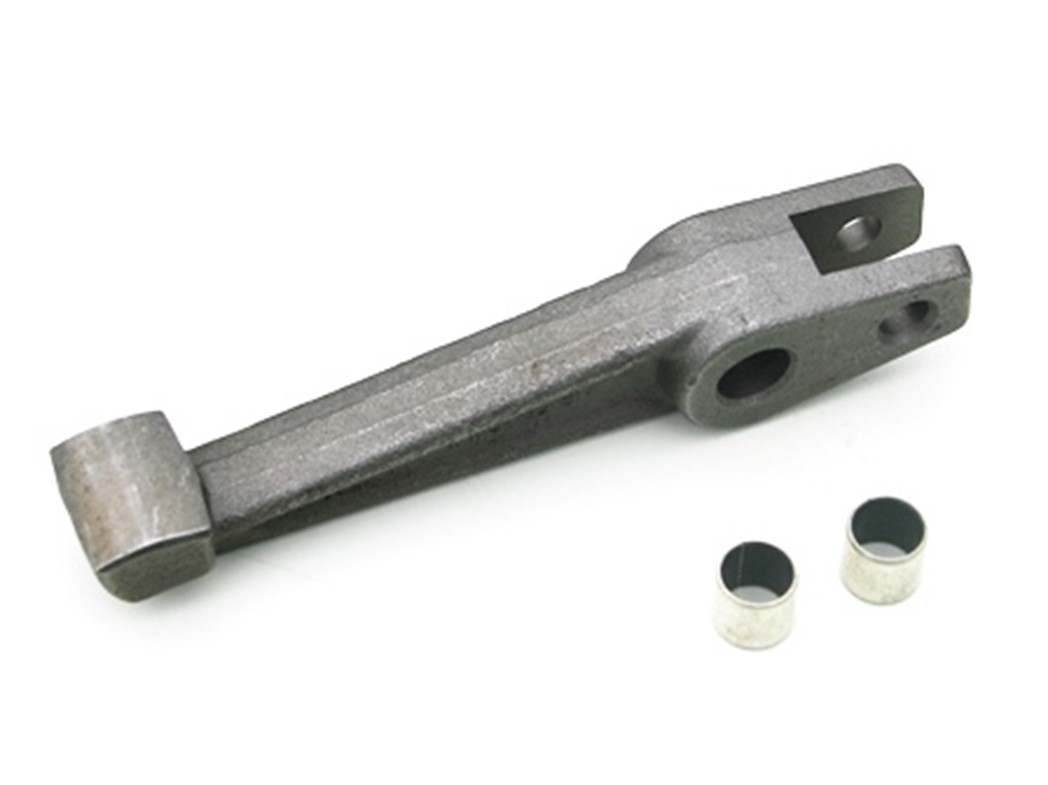
How does a service-exchange clutch work?
A Service Exchange clutch means that I need your old unit back so that I can recondition that one and sell it to somebody else to keep the cycle going. Unless there is a specific reason why you want your own clutch unit back you will put a different clutch unit into your tractor, and you will send your old one back to me and this will go in somebody else’s tractor. This, of course, relies on us receiving clutch units back and being able to source extra clutches every so often to keep the stocks of reconditioned clutches on the shelf. We find that this service-exchange system is much quicker and easier than reconditioning your unit and sending it back to you as we can rebuild 8 or more clutches at a time which reduces the time and costs per clutch.
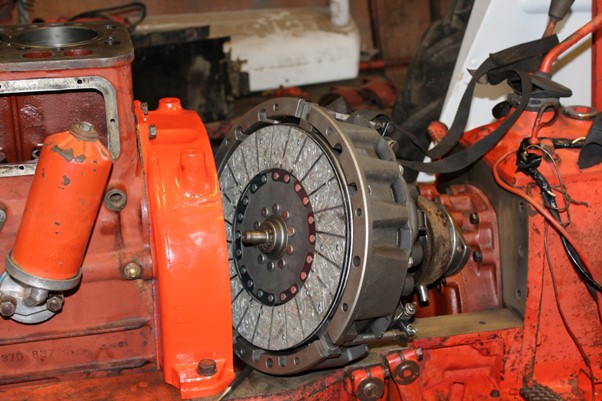
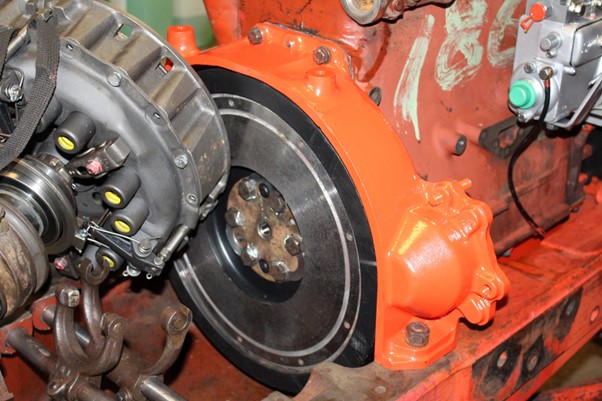
Another reason for you sending your old unit back after you have received the new unit is ease of shipping. Because we are sending you a heavy clutch unit weighing about 35 kg, we make wooden crates with rope handles that we package the clutch units in. As we are sending the good clutch unit first, we put them in the wooden crate and ship them to you using the courier, usually UPS. Within the crate we can then put a return label for the return shipment. You now have a new clutch unit and a wooden crate. You can then put your old unit back in the wooden crate, screw the lid down, put the UPS return label on the outside and we can help you organise a collection with the courier. This way I get a clutch unit back, you don’t have to worry about how to package a heavy clutch unit and I also get my wooden crate back which can go off to somewhere else with another service-exchange clutch unit in it. Simple.
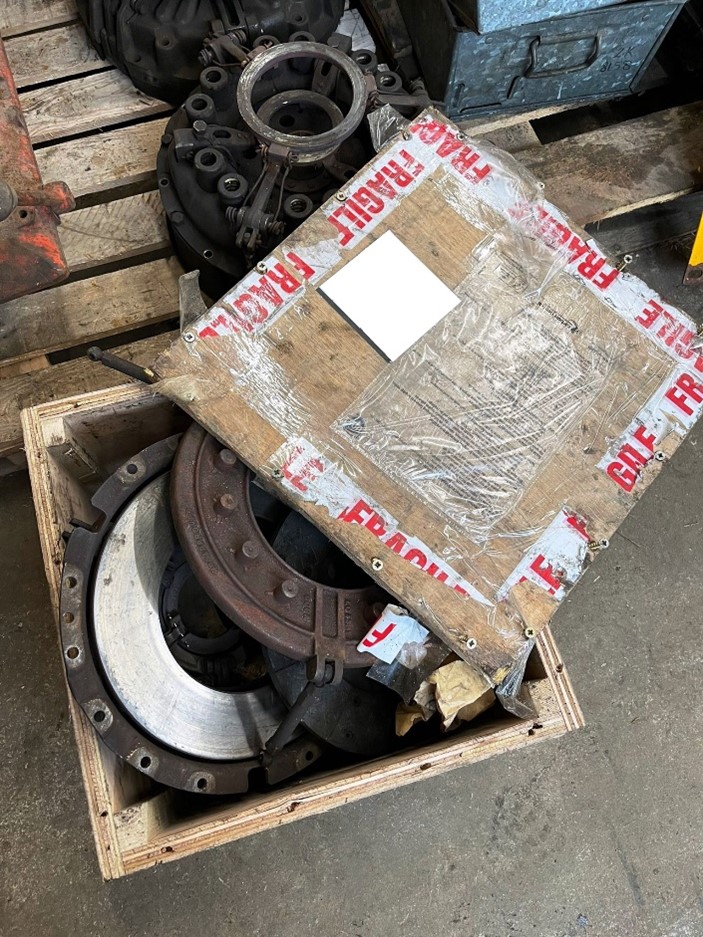
But what happens if my clutch unit is broken, or I don’t have one to send back?
There are times when clutch units are missing, or you have a genuine reason for keeping the clutch unit, or even that it has a lump smashed out of the casting. In situations like this, we can still help you. It may be that you don’t send anything back to us and we have to charge you a surcharge for not returning the old unit – at the moment this surcharge is an additional £150 on top of the price of the clutch. It may also be that there is only a partial surcharge. So, say if the pressure plate had a lug broken on it and was in need of replacement, but the main casting was ok, there may be a partial surcharge as we have new pressure plates that we can still use to repair your old unit and to keep it in circulation.
There may be times when the carriage costs are too high for the return and you would prefer to pay the surcharge as it is easier for all involved – we can work with this as long as we have a good supply of old core units, but they are getting harder and harder to find as time goes by. Talking carriage costs, we can get a return clutch back from almost anywhere in the world for less than £150 with our good rates with UPS and through other couriers too, so we would always prefer to get the old units back as a first option.
Are there other options than a service- exchange clutch?
Yes, there are other options but it all depends on how much work you want to put into the clutch yourself. As I said at the beginning, we purchased all of the component stocks from LuK when they stopped supporting these Leyland and David Brown clutches, so I have lots of the individual components that you would need to repair your own clutch. What you will need depends on your circumstances and it is always best to take the clutch out and strip it down to see what you need before you order components. Here at Tractor Spare Parts Ltd, we have a jig for setting up the clutch units, but you may not have this in your workshop, so that is something to keep in mind when ordering the individual components.
We offer repair kits, many of them genuine LuK kits which focus on one area of the clutch, for example a lever repair kit or a IPTO pressure repair kit. These can be great for customers overseas who are willing to repair their own clutch units, as the carriage is significantly cheaper for a repair kit than it is for a service-exchange clutch unit.
Most of the individual components for the clutches are listed on our website under the clutch section for each model, but if you are unsure get in touch with us and we can help you identify the parts through a parts diagram. You can compare this diagram with your clutch that you have removed and highlight which parts you need. We are more than happy to work with you.
But by far the easiest way to replace a clutch on a Nuffield, Leyland or Marshall tractor is to purchase a service-exchange clutch unit, together with the main clutch plate and the bearings (main bearing, PTO bearing, spigot/flywheel bearing) and clutch fork bushes and away you go. When you receive the new clutch unit, they are ready to go straight into your tractor, no adjustments required, in theory. We do find occasionally that the levers have to be adjusted. This we put down to the flywheel having been skimmed several times during the life of the tractor and this resulting in the clutch sitting more towards the engine. We are happy to advise what to do in this situation if you come across this with your service-exchange clutch unit.
In theory, all you should end up with at the end is the three clutch staples in your pocket.
What about other clutch components other than the clutch unit itself?
Here at Tractor Spare Parts, we pride ourselves in offering ‘Everything that you could need for your Nuffield, Leyland and Marshall tractor’; it even says so on our van. Therefore, we are able to offer other clutch components such as the main drive plate, clutch bearings, clutch forks, plug sleeves, anti-rotation pins, master cylinders etc.
We also offer a flywheel skimming service in our in-house workshop, so whatever you need we are in a great place to help you.





